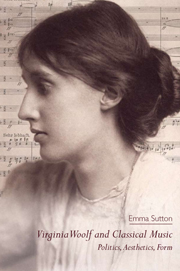2 - Killing the Pianist in the House
Published online by Cambridge University Press: 05 April 2014
Summary
The Voyage Out was, many contemporaries noted, an arrestingly modern work. In a letter to Woolf, Lytton Strachey observed that it was ‘very, very unvictorian’, and reviews variously described it as a novel of ‘modern manners’, the characters as ‘contemporary people’ and the protagonists as ‘modern lovers’. As the previous chapter proposed, The Voyage Out is profoundly shaped by Wagner's music dramas and by ideas about music. Written in a period when art music had, for at least a century, occupied a revered place in European culture and aesthetic theory, Woolf's novel registers music's exceptional cultural prestige and shifting attitudes towards responses to music and their representation in fiction. The Voyage Out can be placed in a long line of novels featuring musicians as protagonists or in which music is prominent in the action and dialogue: in this respect Woolf's first novel has a rather ‘Victorian’ subject. Some of the characters, too, express responses to music that might have come straight from a fin-de-siècle novel: Clarissa Dalloway's arch remarks about the ‘“divine”’ and ‘“thrilling”’ Tristan are the most conspicuous examples. Clarissa's dismissal of ‘“the kind of attitudes people go into over Wagner”’ (VO, 46–7) hardly dilutes the mannered emotionalism of her own recollections, and indeed Woolf's own writing about music occasionally employs similarly Aesthetic, perhaps specifically Paterian, language: referring, in a letter of 1906, to ‘a debauch of music’ she eulogised the ‘pure simple notes – smooth from all passion and frailty, and flawless as gems’ (L, I: 263–4).
- Type
- Chapter
- Information
- Virginia Woolf and Classical MusicPolitics, Aesthetics, Form, pp. 48 - 68Publisher: Edinburgh University PressPrint publication year: 2013



